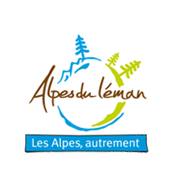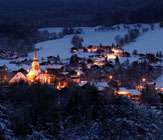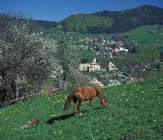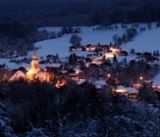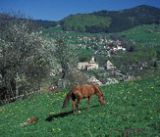Habère-Lullin village
Habère-Lullin is one of the star historic sites in la Vallée Verte. Habère-Lullin is home to several hamlets, the main ones being: Les Macherêts, Le Crottet, Chez Soujeon, Le Jorat, La Ville duFour, Le Pessey, Nantcroux, Torchebise, Bougeailles, Chez Delarche dotted around the main town plus several Alpine hamlets such as l’Herpettaz, la Glappaz, le Replan, Combasseran, les Ervines. The area covers 886 hectares. It is on both banks of La Menoge. The altitude varies from 790m (les Champs Garins) to 1597m (Crête d’Hirmentaz). The current population numbers 802 Dhabérentes et Dhabérents.
History
The name Habère-Lullin comes from the château (in the 12th and 13th centuries) owned by the De Lullin family. Originally, the town stretched up to the ridge linking col de Cou au col des Moises, covering the area of Habère-Poche, or Les Habères mentioned in most ancient texts until the 2 towns were separated in 1840. At the start of the 14th century, the last of the De Lullin nobility gave their rights to the Fernex nobility. Through marriage and successions, the château was returned to Thomas de Genève-Lullin in 1429 and remained in the family until 1664. In 1696 Joseph de Gerbais de Sonnaz bought it from a universal heir of the Marquis of Genève-Lullin, Emmanuel Faucher, and the fief has since stayed in this family. All that remains of the château is a few walls built in the 15th century when an initial Gothic construction was built by the Marquis de Lullin. It was the scene of tragedy at Christmas 1943 when young people organised a ball here. The occupation forces were informed, attacked the château and shot the young men. They then burnt the bodies and the building where there are now only a few burnt walls.
